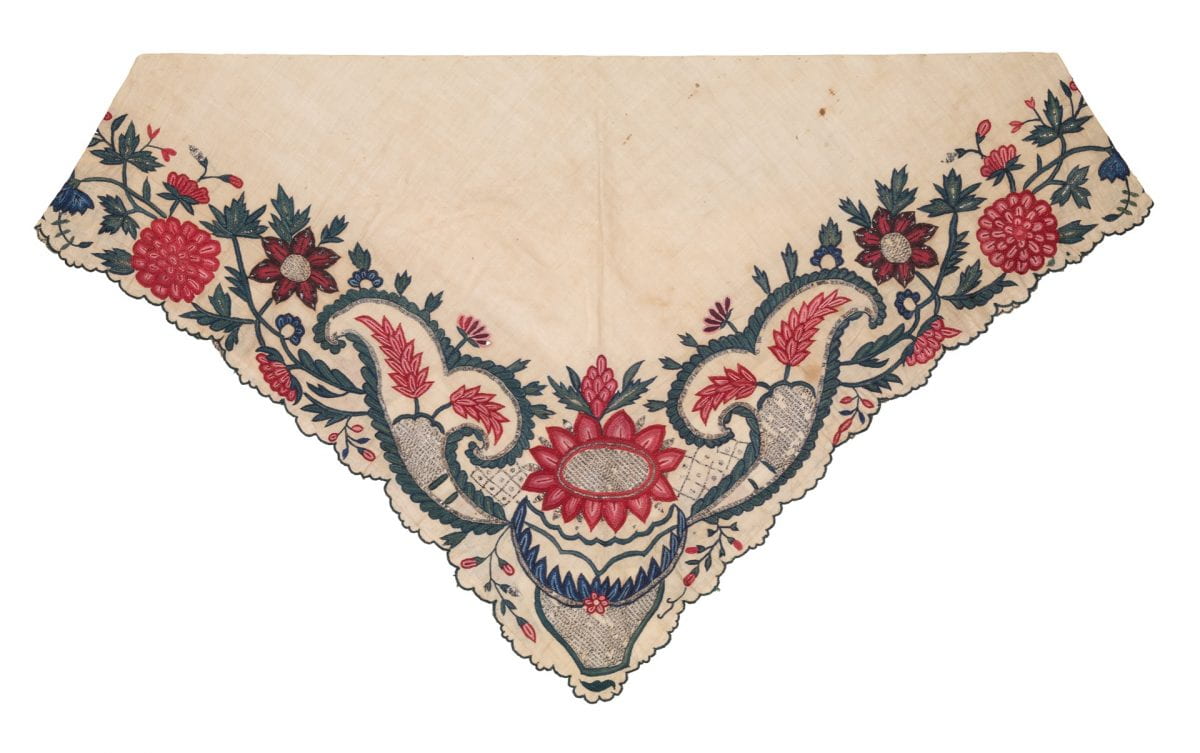In the days of Jane Austen and Louisa May Alcott, the fichu was a fashion necessity for the respectably dressed woman. Western women of all ages wore these triangular or square shawls around their shoulders and tied, tucked or crossed in front to cover a low-cut or square bodice. Named from the French “ficher” (to throw on), this adornment was designed both for modesty and to highlight the neckline or hide clasps and seams.
Fichus were first seen in early 18th-century England and became popular in France, the United States and European colonies through the end of the 19th century. Like other luxury fabrics, many were woven in India and exported along well-established trade routes to Western Europe, or sometimes sold locally to British expatriate women.

Detail of fichu. Photo by Bruce M. White Photography.
This beautifully embroidered example from the Cotsen Textile Traces Study Collection was made in India in the late 18th century for European consumers. The plain weave cotton is simple and durable, with lavish embroidery of colored silk and metallic threads. Chain stitch, blanket stitch and open work are used to create the tapering flowers and leaves along the delicately scalloped edge. Natural designs like this were popular in both men and women’s clothing at the time.


